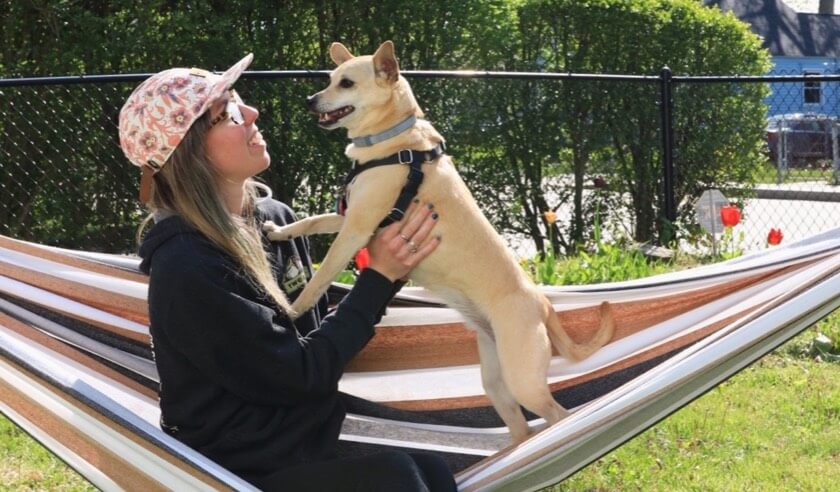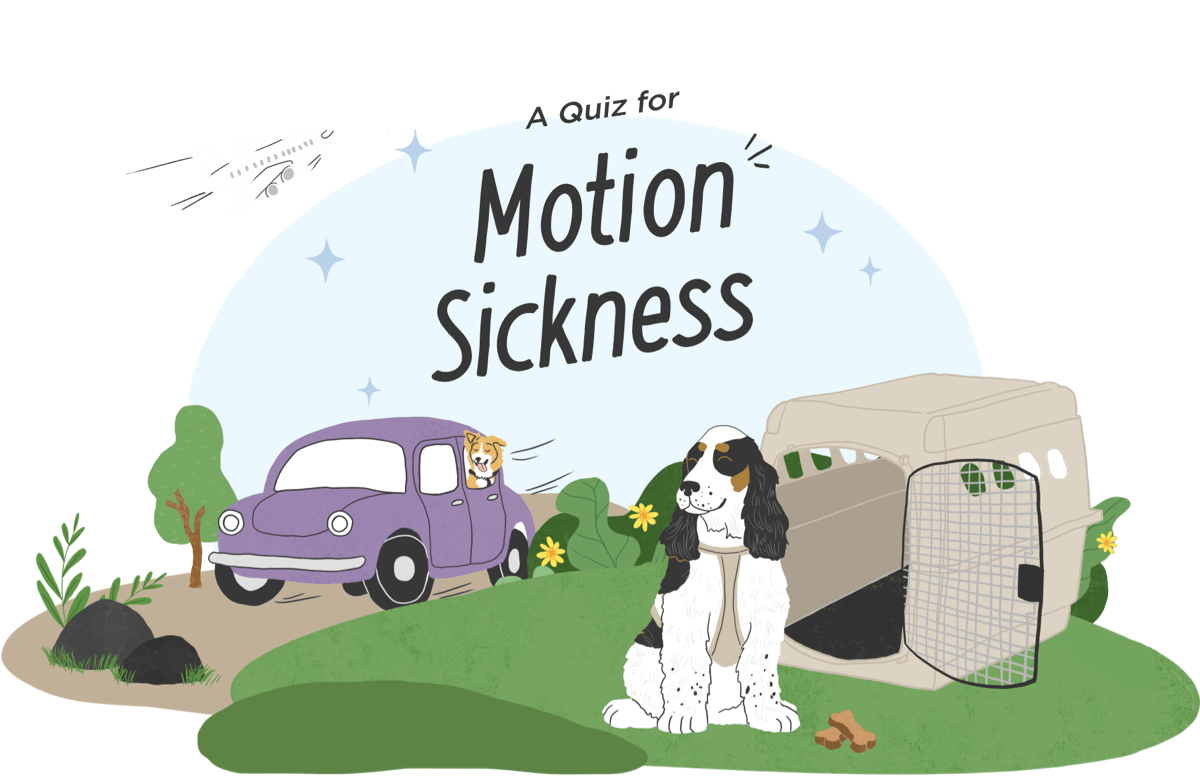Summer is the perfect time of year to travel and to bring your dog along for the fun! While traveling with your dog can be stressful, it doesn’t have to be. Preparing properly for travel with your trusty companion can turn the trip into a vacation.

Here are 6 ways to make road trips with your dog easier this summer.
Make Car Rides Smooth Sailing
Does your dog need a barf bag each time they take a ride in the car? Car sickness can put a damper on your road trip and make you think twice about bringing your dog along for the ride. Even if your dog isn’t vomiting in the car, they can be demonstrating less obvious signs of distress during their time in the car, such as:
- Panting or yawning
- Whining
- Excessive drooling
- Uneasiness
- Fear of riding or even getting in the car
Nearly half of dog owners (48%) say their dog experiences some signs of motion sickness when traveling in a car, which can be stressful for you and your pup and can damage the bond you have with them.1, 2 If your dog exhibits any of these signs of motion sickness, talk with your veterinarian — they can prescribe medication to help prevent the vomiting that your pup experiences when riding in the car.
Buckle Up!
When we drive, we always wear our seatbelts — so why should our pets be any different? Having pets loose in the car can cause an accident if they crawl on your lap or end up down by your feet. Buckling them in using a crash-tested-harness or carrier will help to keep everyone in the car safe. This may also help with anxiety since they’re strapped in and not skidding around the backseat with every stop or turn.
Bring Their ID
Make sure your dog is wearing their collar and ID tag at all times. It’s also a good idea to include your cell phone number as a contact on the tag so you’ll be reunited faster with your dog. Be sure to have your dog microchipped, especially when you’re traveling. This way, even if they escape from their collar or jump out of the car, you’ll have a better chance of being reunited.
And Their Passport (Immunization Records)
Your pet’s immunization records are their passport to doggie daycare and other boarding facilities. If you’re planning on dropping your dog off at a daycare facility while you explore, you’ll need to bring these. Airlines and some hotels ask for these records, too, so bring a copy or even take a photo on your phone and keep them handy. If you don’t have these records available, your veterinarian can provide them.
Know Your Emergency Exits
As you map out your route, it’s good to know where a few animal hospitals and emergency clinics are, just in case. It’s also beneficial to know where the closest one is to your lodging. After all, time is critical when there’s an emergency.
Make Time for Fun
Now it’s time to focus on the fun! There are many resources like BringFido to help you find dog-friendly lodging and restaurants along the way. (It’s a good idea to confirm the lodging you’ve booked allows dogs and doesn’t have weight or other restrictions.) You can also use this site to find parks and other activities along your route so your dog can exercise. They will thank you!
ZPC-00228R2
- The Harris Poll: Custom Motion Sickness and Noise Aversion Omnibus Pet Owner Quantitative Research Report, December 2018
- Conder GA, Sedlacek HS, Boucher JF, Clemence RG. Efficacy and safety of maropitant, a selective neurokinin 1 receptor antagonist, in two randomized clinical trials for prevention of vomiting due to motion sickness. J Vet Pharmacol Ther. 2008;31(6):528-532.





